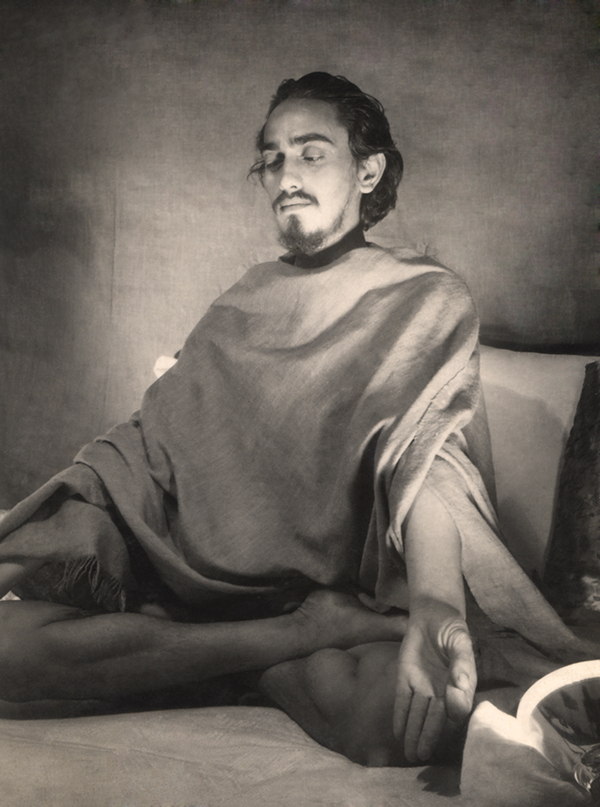When a mantra is imparted to a student, it is meant to be used in a particular and specific way during the practice of meditation. Mantras are not spoken or muttered on the gross physical level, with the mouth, tongue, and voice box, but instead, are heard first mentally, and then allowed to become increasingly subtle and fine. The goal is to eventually achieve a state of constant, effortless awareness, called ajapa japa. To be beneficial, the mantra must be appropriate to the student’s level of attainment, personality, desires, and attitudes.
There are two types of sounds in the world: those which are created by the external world and heard by the ears, and those inner sounds which are called anahata nada (unstruck sounds). Unstruck sounds do not vibrate in quite the same way that sound vibrates in the external world. These sounds are described as having a guiding or leading quality, which carries the meditator to the center of silence within.
A mantra that is used in meditation is a special kind of sound, which does not obstruct or interfere with the flow of breath in meditation, but instead helps to balance and refine the breath, leading to a unique and special state. This state is called sushumna awakening. When the sushumna nadi or channel is active, the breath flows freely and equally through both nostrils simultaneously. This unique state is different than the normal functioning of the body, breath, and mind, in which ether the left nadi (ida) or the right nadi (pingala) is active, leading to dominance in one or the other of the nostrils. When the student succeeds in activating sushumna, the breath flows evenly through both nostrils and both the breath and the mind function in complete harmony. This special state is ideally suited for meditation, for when it is achieved, the mind becomes completely inward in its focus.
As the mind becomes more inward, it disconnects from the external senses. Then the student will experience a flow of thoughts and impressions coming forward from the unconscious mind, the storehouse of all the impressions of our lifetime. These impressions, thoughts, and emotions have created deep grooves in the unconscious mind. The purpose of mantra is to help us to go beyond these impressions and grooves, creating new, beneficial channels in the mind. Then, the mind begins to flow spontaneously in the new grooves created by the mantra. This helps the mind to become concentrated, one-pointed, and inward. As the mind centers on the mantra, the myriad other impressions, memories, thoughts, and emotions of the conscious and unconscious mind become still.
Once a student has received a mantra, he or she should seek to practice that mantra for some time, bringing it to increasingly subtle and fine levels of experience. Sometimes modern students become impatient after practicing the mantra for only a few weeks’ or months’ time, feeling that they are making no progress because they cannot perceive any dramatic or immediate external changes as a result of this practice. Some conclude that their mantra is not the “right” mantra, and seek other practices. Others simply discontinue their practice, disheartened by their supposed lack of progress. Such a situation is like the impatience experienced by a small child who plants a tulip bulb in September, and then wants to dig it up two days later because he or she has not yet seen any signs of a flower.
Patience is essential in the practice of meditation. One should work with the mantra with full dedication and with a deep feeling for the mantra for some time. Eventually, the mantra becomes like a loyal friend, who will never abandon you and who is always available to help you. That is why teachers sometimes tell their students that a dependence on any external person or object will always disappoint the student at some time, whereas seeking a sense of solace and comfort from the mantra will be helpful, especially during those times in every human life when loneliness and doubt exist.
When you begin the practice of meditation on a mantra, you are systematically working to make conscious successively deeper and more remote levels of your own inner experience. This process has two aspects. The first is one of refinement and purification of the existing impressions of the mind. The second, which occurs simultaneously, is one of cultivating and deepening the experience of the mantra, through active meditation and japa, in order to create a positive groove in both conscious and unconscious levels of mind. Because most people have not yet acquired much sensitivity to or awareness of the deeper levels of themselves, it is not easy for them to observe and appreciate the deep changes that are taking place within during this process. But as one continues to practice meditation on the mantra, an internal process is taking place that will eventually reveal and express itself both in increasingly refined and evolved external behavior and also in a gradual deepening of the experience of meditation.
Excerpted from The Transforming Power of Yoga: The Subtle Science of Altering the Mindstream, (Swami Rama),Yoga International, May/June 1992

